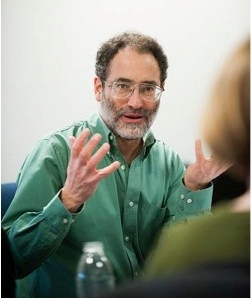29
2018
Building a Robust Volunteer Force
An Essay by Dania Toscano Miwa and Jim Toscano Fourth in a Series Volunteers are among the leading potential sources for new growth and new resources in nonprofit organizations. Volunteers and donors share many of the same values. This is seen when they express the reasons why they donate to and/or volunteer for a nonprofit organization. New volunteers become new donors. Many of the ways we prospect for new donors are the same strategies used in the recruitment of volunteers. Given that over 60 million American adults volunteer – which is approximately one-third of the total adult population – nonprofits…
11
2018
2018: Ten Nonprofit Trends
By Jim Toscano and Dania Miwa What a year 2017 was! Many of the trends outlined here prevailed through the year. Now, prepare for an even more unsettling, disruptive one. Change in individual donor strategy as the tax laws change. With fewer individuals expected to itemize under the provisions of the new tax law, new strategies will guide resource developments attempts to renew and expand previous donations. Donor retention and stewardship will take on new messaging emphasizing the donor. Donor cultivation and solicitation will also need to be more substantive, more-values based and more outcomes oriented. Change in donor assessment…
23
2017
The Big Shift in Fundraising
Note: This guest post is from Andy Robinson, a terrific fundraising trainer and consultant who works across North America. On November 15, Andy will be in St. Paul, leading a workshop for the Minnesota Council of Nonprofits: Mobilize Your Board to Raise More Money. I hope you can join him! -Dania Like many fundraisers, I always anticipate the annual release of Giving USA, which offers a thorough overview of trends in U.S. philanthropy. I’ve also been reading Ruth McCambridge of the Nonprofit Quarterly, whose cogent analysis of the Giving USA data is really helpful – and inspired this post. Thanks,…
11
2017Eleven Ways to Increase Nonprofit Revenue
Dania Toscano Miwa and Jim Toscano For many nonprofits the current revenue situation is undergoing change, especially those seeking growth. With increasing numbers of nonprofits, higher competition, changes in individual giving, more narrow focusing of many foundations and corporations and impending loss of some government funding, where do we look for stability and growth of revenue? Here are eleven options. Many work together. Not all, or any, may fit specific nonprofit organizations. Hopefully, out of these possibilities, will come some opportunity for increased revenue or a stimulus for creative new options. Overall, the first step is to build a culture…
07
2017
Trump Tectonics
Just like the plates in earth’s crust, the three major sectors of our society– for-profit, nonprofit and government–are slowly but continuously shifting in terms of responsibility for various elements in the society. In the last century, government grew exponentially in terms of percentage of the GDP for which it was responsible. Nonprofits also grew, benefitting from the large economic growth of the nation, increase in civil need, growing private philanthropy and support from government through grants, contracts and other forms of subsidy. Since the presidential election and inauguration, we have something different, a phenomenon that is starting to produce earthquakes…
30
2016
New Twists on Philanthropy
Last week saw an interesting development in the world of philanthropy, usually defined as giving money to good causes. Often there is also an assumption that it’s done as a donation to a charity, with a tax deduction for the gift. Now we have two examples where that isn’t the case, or almost not the case. Variants on the impact investments of foundations and greater flexibility allowed private business, these new efforts have a much more defined focus. When the examples are provided by George Soros and Dr. Priscilla Chan and Mark Zuckerberg, other philanthropists take notice. George Soros’ Focus on…
08
2016
Let’s Prove Howard Buffet Wrong!
Here’s what Buffet believes: “Charity doesn’t solve a long-term problem. It addresses an immediate situation, but it won’t solve anything.” He still gives money philanthropically, but prefers to be part of the movement to achieve impact through entrepreneurial solutions. Yet, we in the nonprofit world, certainly up to our eyeballs in immediate situations, also know a considerable amount about longer-term solutions. Take homelessness. Much of the resources that are available are spent in the day-to-day task of sheltering and feeding those experiencing homelessness. Yes, true, although we do know that first obtaining secure, long-term, safe housing in an environment where…
15
2015
2016: Ten Nonprofit Trends
Change is accelerating in the non-profit sector to a degree that the following trends will become highly visible and important in the new year: Sector Shift: Very slowly, over 50 years ago, the government sector began shifting social services to the nonprofit sector, resulting in much of the responsibility for this area being privatized. Certainly, government is still funding significant portions, along with the added foundation, corporate and individual donors. Now, with social impact investing, for-profit companies, including B-Corps and others, fueled by foundation corpus investments, social impact bonds, mutual funds and individual donor/investors, are taking on low-hanging fruits to produce…
22
2015
What Should We Look For When Hiring a Nonprofit CEO?
Now that the 401Ks have bounced back, the stresses of running nonprofits are at record highs and many CEOs are in their sixties, we are witnessing a rather disproportionate CEO vacancy rate in nonprofit-land. Clearly the headhunters are doing well running high-paid searches. Their stock in trade is experience, wide networks, skill in interviewing and negotiating, finding out what is really needed and socio-metrics. The last item involves asking around about people who are potential candidates. We’ve all gotten those calls. The real question for the pros and for those agencies that are doing searches themselves is what should we look…
07
2015
A New Collaboration?
Foundations must spend at least 5% of their corpus each year, under a federal requirement governing their activities. Imagine what could be done if all of their corpus–spending and investments-were directed at their missions? What about their staffs—those substantive and technical experts they hire—could they work cooperatively as truly equal partners with nonprofits and for-profits in the formulation of the very projects they all want to see succeed? For many years, a handful of foundations have been making program-related low interest loans to further their mission; others have been managing investments away from certain areas, e.g. cigarettes, fossil fuels, gambling…
